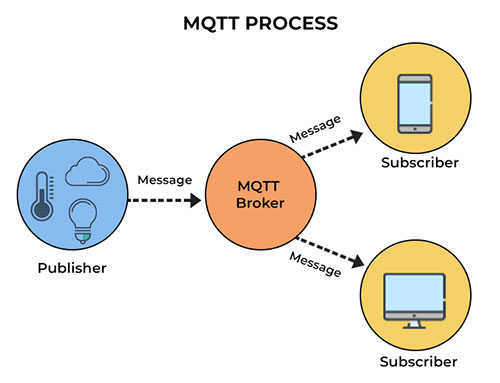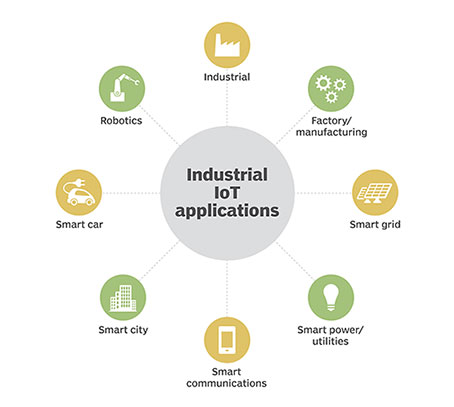So What exactly is MQTT?

The MQTT protocol provides a lightweight method of carrying out messaging using a publish/subscribe model. This makes it suitable for Internet of Things messaging such as with low power sensors or mobile devices such as phones, embedded computers or microcontrollers.
This article explains the functionality of MQTT broker, Use cases, compares its various implementations.
MQTT is efficient in its utilization of bandwidth and system resources making it suitable for use on all devices from low power single board computers to full servers.
An MQTT broker is an intermediary that enables MQTT clients/devices to communicate amongst each other. Basically, an MQTT broker receives the messages published by clients/devices, filters the incoming messages by topic, and distributes them to subscribers.
It is most commonly run over TCP/IP stack, but there are also toher MQTT implementations that use other protocols (e.g. Bluetooth). Since the protocol handles more than “Message Queuing(MQ)” and “Telemetry Transport(TT)”, the term MQTT is commonly used as the protocol’s name instead of a longer name.
The core of MQTT communication is the publish/subscribe model. Information shared is organized by topics. Client devices can publish data to a topic to send messages to any subscribers. Similarly, clients can subscribe to a topic to be notified when a message is published.
MQTT Use-cases

MQTT is mostly popular in IoT and IIoT (Industrial Internet of Things) because it can be used across different platforms while consuming minimal bandwidth. IoT devices usually have very limited resources. Because MQTT implementations are more lightweight and efficient than other communication architectures (for example, an HTTP-based RESTful API), MQTT is often a wise choice for IoT. Some of the most common MQTT use cases in IoT and IIoT are:
- Collecting data from sensors and publishing it to the MQTT server.
- Publishing mission-critical data directly from a sensor node to a user device.
- Remotely Configuring different IoT and IIoT devices.
- Instantly push OTA(over-the-air) updates to all the network connected devices.
- Since MQTT allows wildcard it can send configuration data from a single web platform or smartphone app to all devices at once
Industries that can use MQTT:
- Automotive
- Logistics
- Manufacturing
- Smart Home
- Consumer Products
- Transportation
Types of MQTT Brokers
Mainly, there are two types of MQTT brokers:
Managed Brokers
Managed brokers usually do not require you to set up anything on your server to enable MQTT communication. Managed broker services let you use their hosted brokers for your system. A good example of a managed MQTT broker is the AWS IoT Core.
Self-Hosted Brokers
As the name suggests, self-hosted MQTT brokers require you to install the broker on your own Cloud VPS or a server with a static IP. The installation process is quite simple. Managing, securing, and scaling the brokers requires detailed knowledge of the systems.
There are several open-source MQTT broker implementations available, for example mosquitto and hivemq, etc.
Why MQTT?
- Efficient, Reliable and Lightweight
- Easily Scale to Millions of Devices Things
- Two-way Communications
- Security Integrated & Enabled
- Reliable Message Delivery system
How To Set Up An MQTT broker (implementation)
- Local setup – Installing and Configuring MQTT Broker on Raspberry Pi
- Cloud-based MQTT Broker – Installing and Configuring MQTT Broker a VPS
Are you looking for a Cloud based MQTT Broker services for your company?
Read more at https://www.reliconstech.com/mqtt-broker-cloudserver-iot.php